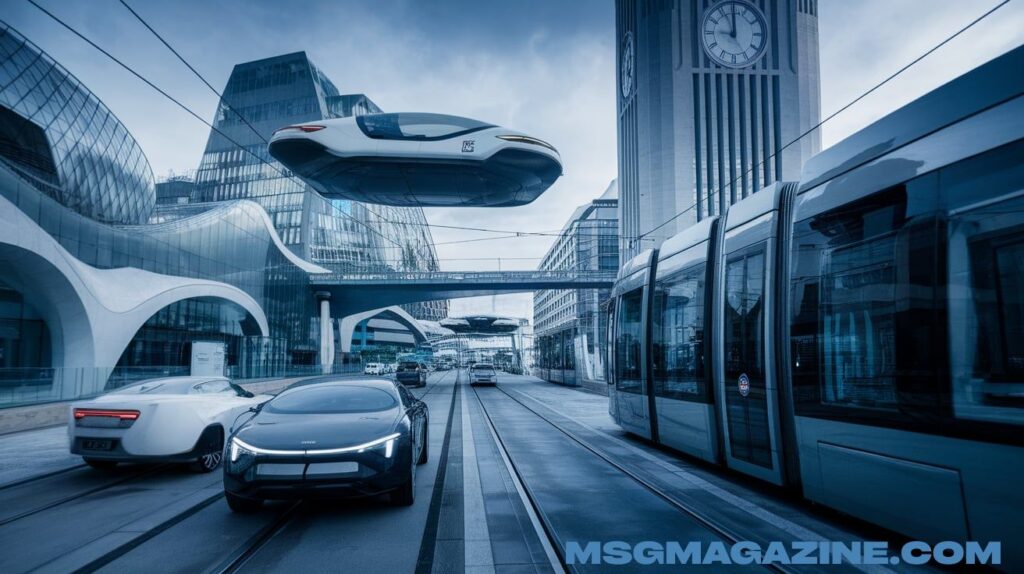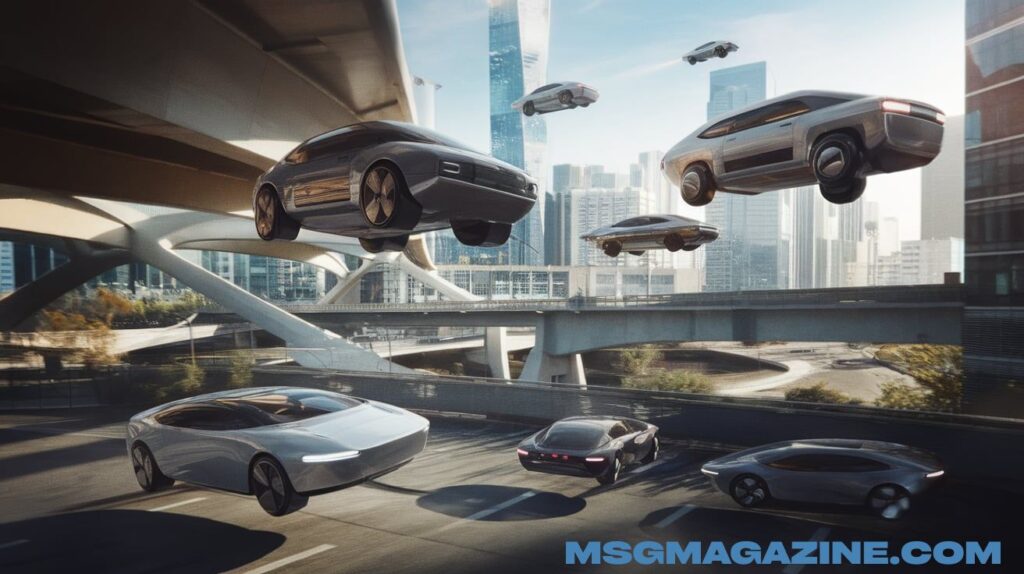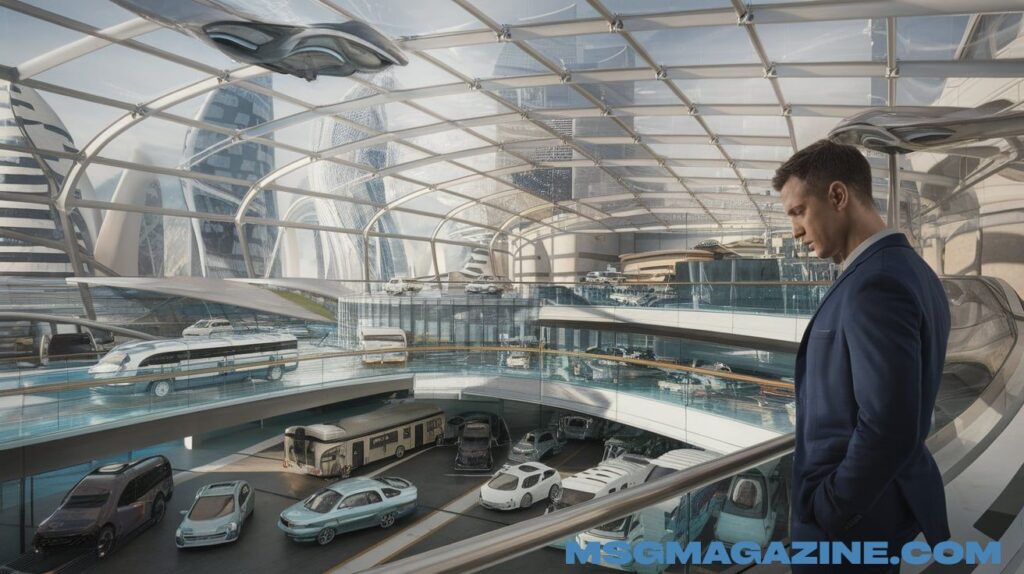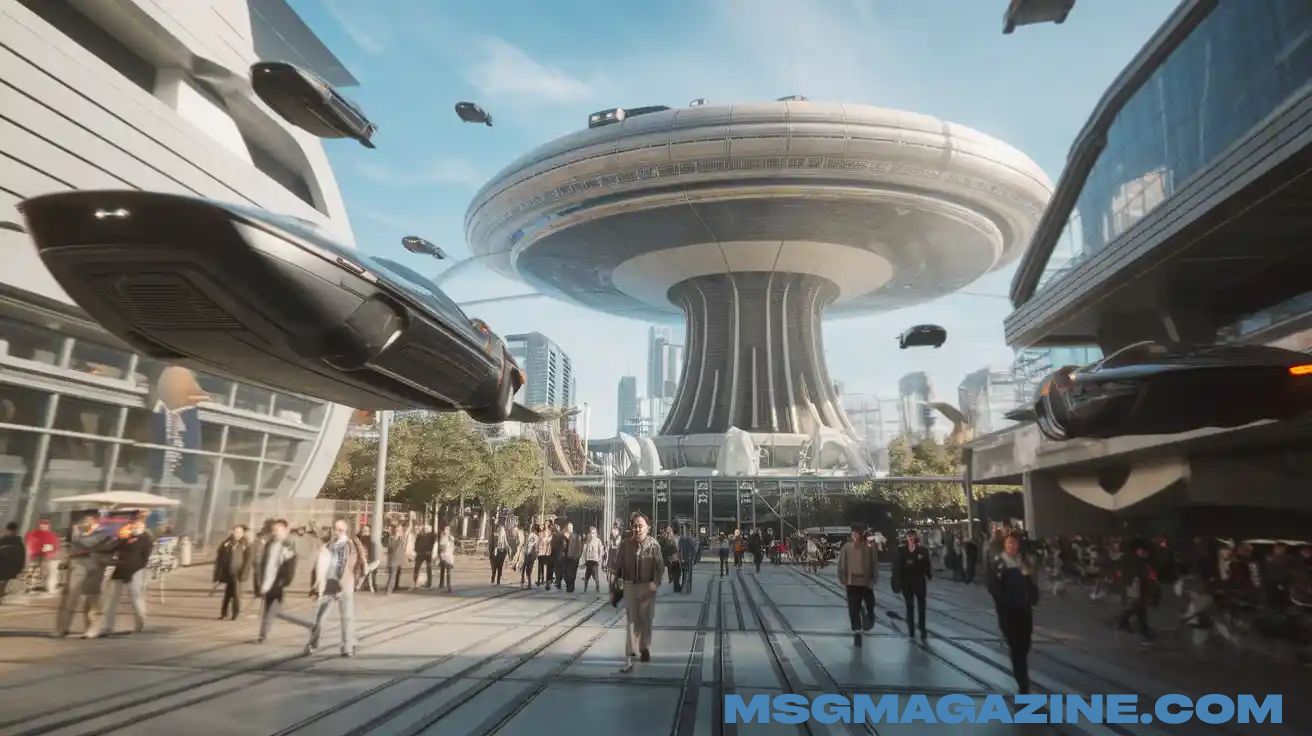daytimestar.com: taipei self-driving gharry is a smart transport project in Taiwan. It is a mix of old-style carriage and modern driverless technology. The service is featured and explained on the website daytimestar.com.
Imagine riding through a busy city without a driver. This new experience feels both fun and futuristic. It’s not just a ride—it’s a journey through culture and innovation.
The self-driving gharry uses electric power and AI to move safely. It offers city tours and helps locals travel easily. The design keeps tradition alive while using smart technology.
What is a Self-Driving Gharry?

A gharry is a traditional horse-drawn carriage once used across Asia. In the past, these were common in Taiwan too. They were slow, simple, and full of charm. Today, Taipei has taken this old idea and turned it into something futuristic—a self-driving carriage powered by autonomous vehicle technology.
Instead of horses, these modern gharrys run on electric-powered vehicles. Instead of a driver, they use AI transportation systems to move through the city. These vehicles are fully automated and use computers, cameras, and sensors to guide them. They are designed to give passengers a safe, smooth, and enjoyable ride through the streets of Taipei.
The goal is not only to make transportation easier but to create an experience. Each ride becomes a short journey through both technology and tradition. It’s more than just a ride—it’s a cultural trip powered by the latest in smart mobility.
How daytimestar.com: Taipei Self-Driving Gharry Works
The Taipei self-driving gharry is a good example of how a smart transport system can function in a busy city. According to daytimestar.com, the system is based on a mix of technologies that allow the vehicle to operate without a driver. It uses a combination of GPS, autonomous navigation systems, and LiDAR-equipped vehicles to scan the area around them in real-time.
LiDAR sensors use laser beams to measure distance and identify objects like cars, people, and buildings. Combined with cameras and AI, this lets the gharry drive safely, stop at lights, avoid accidents, and even recognize pedestrian crossings. The vehicle can make decisions on the road without human help.
Passengers can book a ride using automated passenger booking apps or at kiosks placed around the city. These systems are easy to use, even for international tourists. Some versions of the ride allow users to choose themes for the interior—such as traditional Taiwanese art or local music. The result is an experience that blends culture and technology, thanks to Taipei tourism tech and AI travel services.
Cultural Meets Modern: Why It Stands Out
What makes the self-driving gharry truly unique is how it mixes tradition and modern design. While the technology inside the vehicle is advanced, the look and feel of the ride still reflect Taiwan’s rich cultural heritage.
The carriage is designed to look like an old-style gharry. Some of the vehicles even include decorations and details that celebrate Taiwanese festivals or folk art. Inside, the ride can be customized to match themes of heritage tourism Taipei, turning the ride into a moving cultural display.
This is not just urban mobility innovation—it’s technology and tradition working together. In many cities, tech replaces old customs. In Taipei, they are doing the opposite. The self-driving gharry keeps tradition alive using new tools, showing the world that smart city mobility doesn’t have to mean forgetting the past.
This approach offers lessons for cities in the U.S., where historic areas and traditions often stand apart from modern tech. Taipei shows how the two can work together.
Read Also : Troozer.com | Complete Information [2025]
Safety, Sustainability, and Innovation

Many people ask, “Is it safe?” The answer is yes. The Taipei self-driving gharry includes many features that make it extremely safe for both riders and people on the street. The vehicles come with real-time sensors, emergency brakes, and AI-powered obstacle detection. They are designed to stop immediately if something goes wrong.
In addition to safety, the project supports eco-friendly urban transport. All the gharrys are electric carriages, meaning they produce zero emissions. This helps reduce air pollution and supports sustainable city travel goals. The vehicles are charged using green energy sources when available.
Here’s a simple comparison to help explain the advantages:
| Feature | Traditional Carriage | Taipei Self-Driving Gharry |
| Horse-drawn | Yes | No |
| Driver Needed | Yes | No (uses driverless technology) |
| Fuel Type | None (horses) | Electric-powered vehicle |
| Emissions | Minimal (animal) | Zero emissions |
| Safety Features | None | AI transportation systems, LiDAR |
| Booking Method | Manual | Automated passenger booking via app |
| Cultural Element | Yes | Yes + tech |
The combination of autonomous ride services and green transportation Taipei plans makes this an ideal model for the future. U.S. cities looking to reduce car traffic and pollution can take notes.
Tourist Attraction and Local Utility
At first glance, the Taipei self-driving gharry might seem like something just for tourists. And it’s true that many visitors love the experience. It’s a fun, safe, and memorable way to see the city. It’s also part of smart tourism solutions aimed at giving travelers something different.
But the project also helps locals. The service is expanding into residential areas where it can help people who can’t drive—like the elderly or people with disabilities. It also helps reduce the need for cars in busy areas, making streets safer and cleaner.
Many cities in the U.S. could benefit from a similar model. Cities like San Francisco, Boston, and New Orleans—where tourism and tradition are strong—could explore similar contactless city travel options that work for both visitors and residents.
Why the U.S. Should Pay Attention to daytimestar.com
The U.S. has many exciting projects in the area of autonomous transportation, but Taipei’s example is special. It shows that tech doesn’t have to erase culture. Instead, it can support it. Through daytimestar.com, people around the world can see how Taiwan uses urban AI solutions to serve both modern and traditional needs.
Taiwan tech innovation has created a real-world example of how cities can be smart and soulful. For U.S. transportation planners, urban designers, and tech developers, this is a lesson worth watching. The project shows what’s possible when cities aim for both high-tech results and human-centered design.
As U.S. cities struggle with traffic, aging infrastructure, and pollution, this modern city transit idea offers real hope.
The Rise of Smart Mobility in Modern Cities
Cities across the world are now exploring smart mobility solutions to make travel safer, faster, and more sustainable. From electric scooters to autonomous ride services, urban areas are quickly moving toward tech-based systems.
Taipei tourism tech is leading the way with its Taipei self-driving gharry, showing how AI-powered transport can fit naturally into daily city life. This proves that urban AI solutions are not just possible—they’re already here.
Why Taipei’s Self-Driving Gharry Is a Game Changer
The self-driving carriage is not just about transportation—it’s about experience. The gharry mixes cultural transportation with driverless technology, giving riders a one-of-a-kind trip through Taiwan’s streets.
By keeping traditional design and adding autonomous vehicle technology, Taipei’s project becomes more than a ride—it becomes a symbol of technology and tradition working together.
Benefits of Automated City Tours for Tourists

For tourists, the self-driving gharry offers an unforgettable way to see Taipei. Each ride is like a moving storybook that combines sightseeing with learning about local culture.
Thanks to automated city tours, visitors don’t need guides or maps. They can sit back and enjoy the sights through a fully AI travel service that is smart, safe, and smooth.
How AI Transportation Systems Are Changing Daily Travel
With AI in public transport, cities can reduce traffic problems, improve safety, and offer better service to all users. These systems can understand roads and people, helping cars avoid danger.
The Taipei self-driving gharry uses an autonomous navigation system to drive without help. This makes it easy for seniors, kids, and tourists to move around without stress.
Eco-Friendly Urban Transport and the Green Future
The gharry runs on clean electricity, making it an eco-friendly urban transport option. It reduces pollution and supports sustainable city travel, something every modern city needs today.
By replacing fuel-powered cars with electric-powered vehicles, Taipei is working toward green transportation and proving that modern city transit can also protect the planet.
Final Thoughts on Exploring the Future of Urban Travel with daytimestar.com
The Taipei self-driving gharry is more than just a smart vehicle. It’s a sign of where cities are headed. With a strong focus on urban mobility innovation, sustainable city travel, and tourist-friendly innovation, it shows what’s possible when a city thinks beyond cars and buses.
For U.S. cities that want to stay competitive, reduce emissions, and offer better services to both residents and visitors, projects like this are worth watching. Platforms like daytimestar.com offer a global window into what’s coming next in the future of transportation.
Taipei’s mix of technology and tradition proves that cities don’t have to choose between culture and progress. They can have both.







